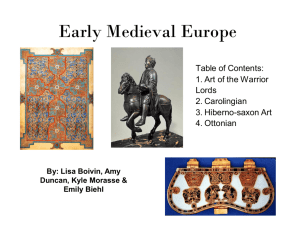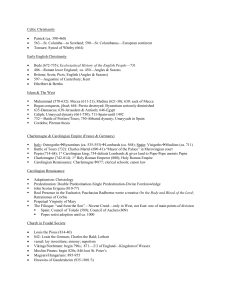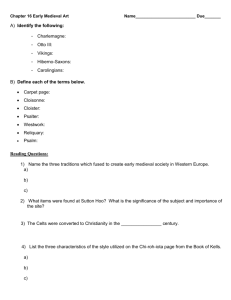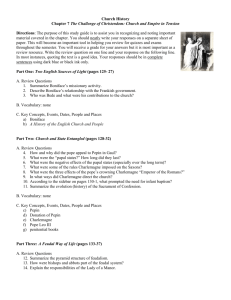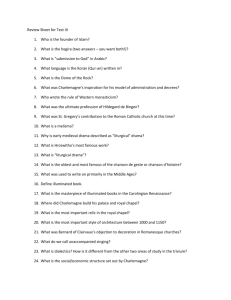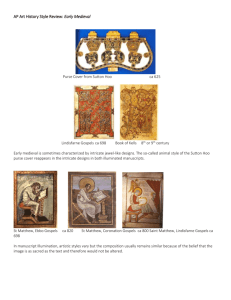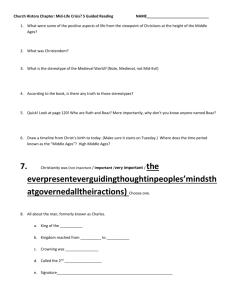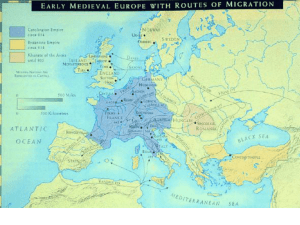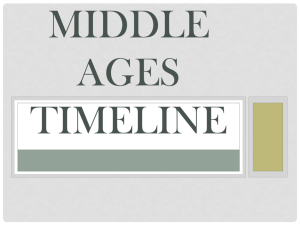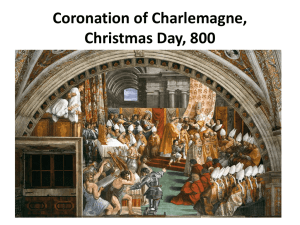10/21/13 Unit #3: Carolingian Revival – Sculpture and Manuscripts
advertisement
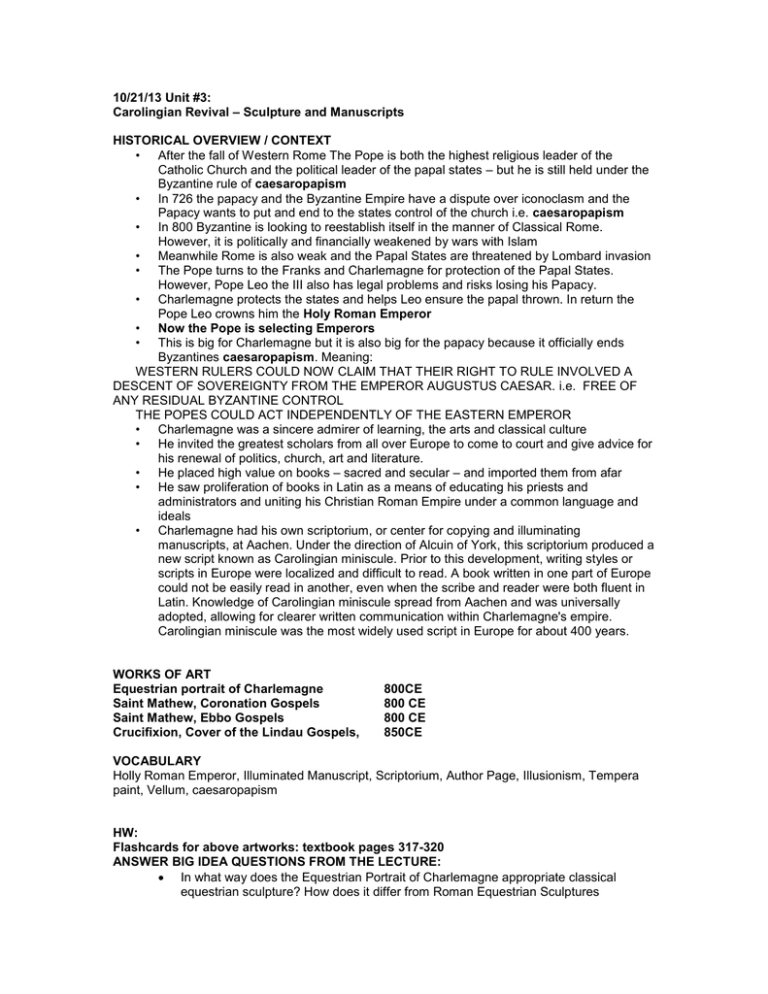
10/21/13 Unit #3: Carolingian Revival – Sculpture and Manuscripts HISTORICAL OVERVIEW / CONTEXT • After the fall of Western Rome The Pope is both the highest religious leader of the Catholic Church and the political leader of the papal states – but he is still held under the Byzantine rule of caesaropapism • In 726 the papacy and the Byzantine Empire have a dispute over iconoclasm and the Papacy wants to put and end to the states control of the church i.e. caesaropapism • In 800 Byzantine is looking to reestablish itself in the manner of Classical Rome. However, it is politically and financially weakened by wars with Islam • Meanwhile Rome is also weak and the Papal States are threatened by Lombard invasion • The Pope turns to the Franks and Charlemagne for protection of the Papal States. However, Pope Leo the III also has legal problems and risks losing his Papacy. • Charlemagne protects the states and helps Leo ensure the papal thrown. In return the Pope Leo crowns him the Holy Roman Emperor • Now the Pope is selecting Emperors • This is big for Charlemagne but it is also big for the papacy because it officially ends Byzantines caesaropapism. Meaning: WESTERN RULERS COULD NOW CLAIM THAT THEIR RIGHT TO RULE INVOLVED A DESCENT OF SOVEREIGNTY FROM THE EMPEROR AUGUSTUS CAESAR. i.e. FREE OF ANY RESIDUAL BYZANTINE CONTROL THE POPES COULD ACT INDEPENDENTLY OF THE EASTERN EMPEROR • Charlemagne was a sincere admirer of learning, the arts and classical culture • He invited the greatest scholars from all over Europe to come to court and give advice for his renewal of politics, church, art and literature. • He placed high value on books – sacred and secular – and imported them from afar • He saw proliferation of books in Latin as a means of educating his priests and administrators and uniting his Christian Roman Empire under a common language and ideals • Charlemagne had his own scriptorium, or center for copying and illuminating manuscripts, at Aachen. Under the direction of Alcuin of York, this scriptorium produced a new script known as Carolingian miniscule. Prior to this development, writing styles or scripts in Europe were localized and difficult to read. A book written in one part of Europe could not be easily read in another, even when the scribe and reader were both fluent in Latin. Knowledge of Carolingian miniscule spread from Aachen and was universally adopted, allowing for clearer written communication within Charlemagne's empire. Carolingian miniscule was the most widely used script in Europe for about 400 years. WORKS OF ART Equestrian portrait of Charlemagne Saint Mathew, Coronation Gospels Saint Mathew, Ebbo Gospels Crucifixion, Cover of the Lindau Gospels, 800CE 800 CE 800 CE 850CE VOCABULARY Holly Roman Emperor, Illuminated Manuscript, Scriptorium, Author Page, Illusionism, Tempera paint, Vellum, caesaropapism HW: Flashcards for above artworks: textbook pages 317-320 ANSWER BIG IDEA QUESTIONS FROM THE LECTURE: In what way does the Equestrian Portrait of Charlemagne appropriate classical equestrian sculpture? How does it differ from Roman Equestrian Sculptures Why was it important to Charlemagne that his scriptoriums produce 100s of manuscript in Carolingian miniscule. What political and cultural purpose did the production of books serve What stylistic developments are evident in the Coronation Gospels and why? How does the style of the Ebbo Gospel differ from the Coronation Gospel and why?
